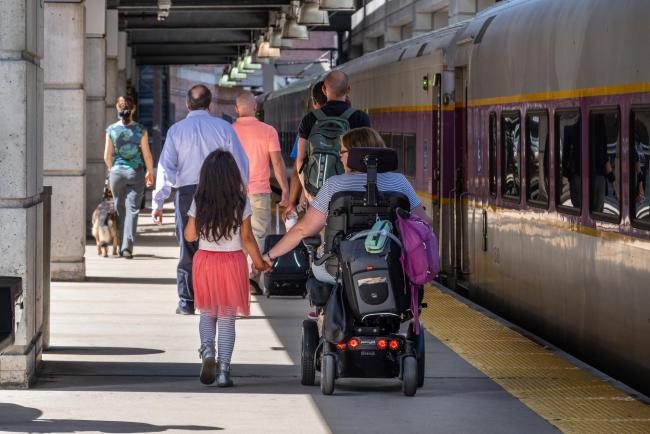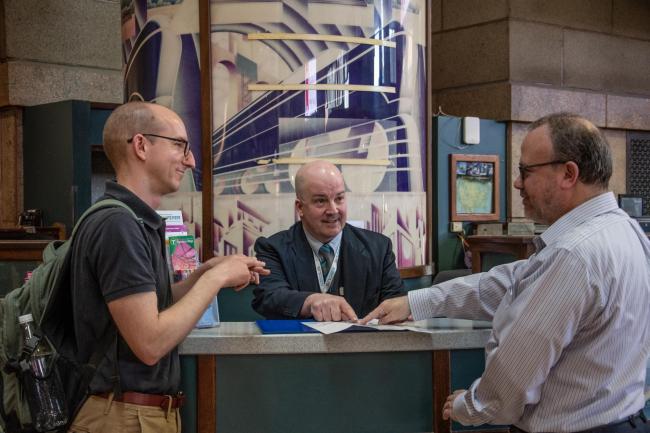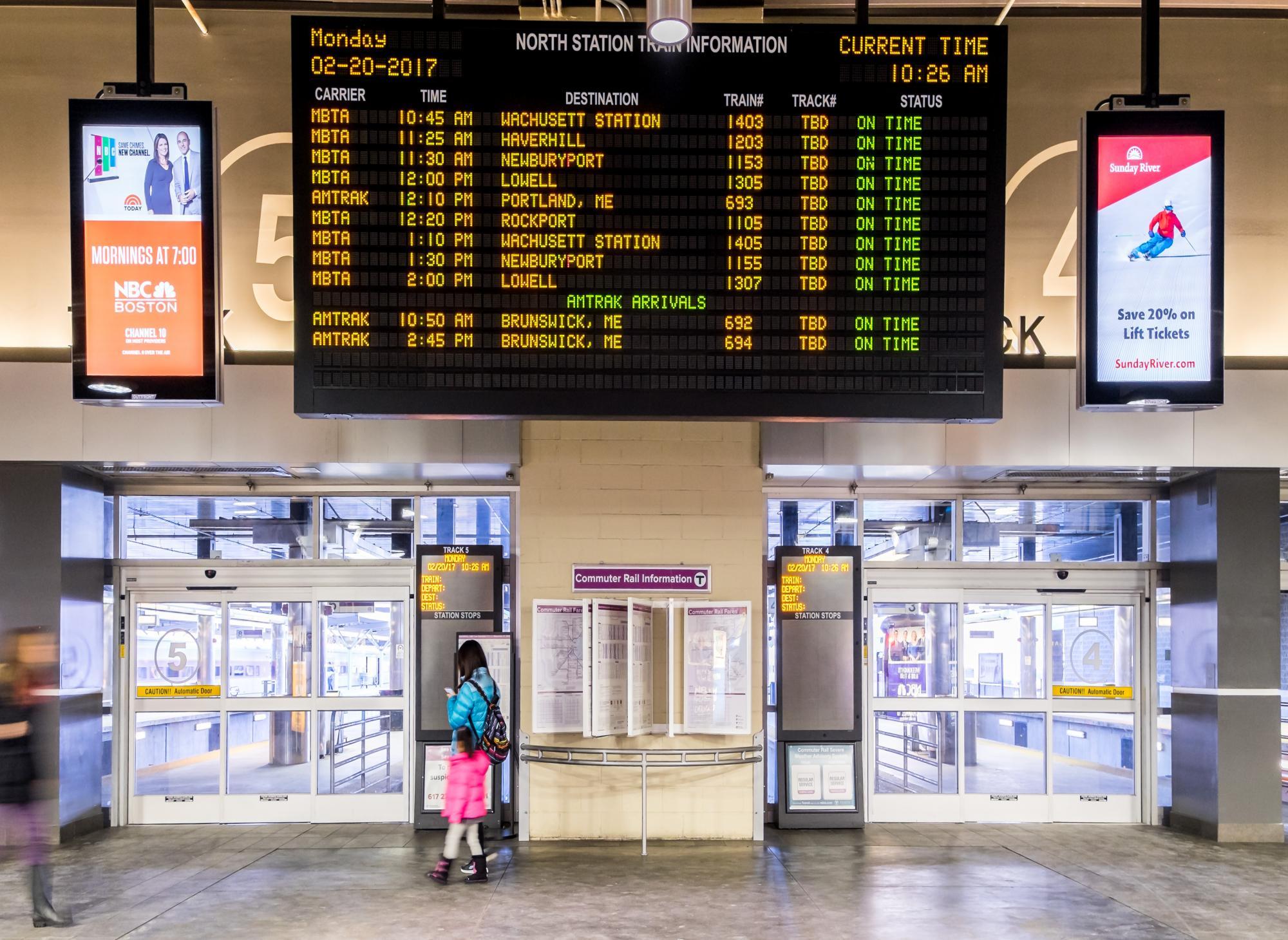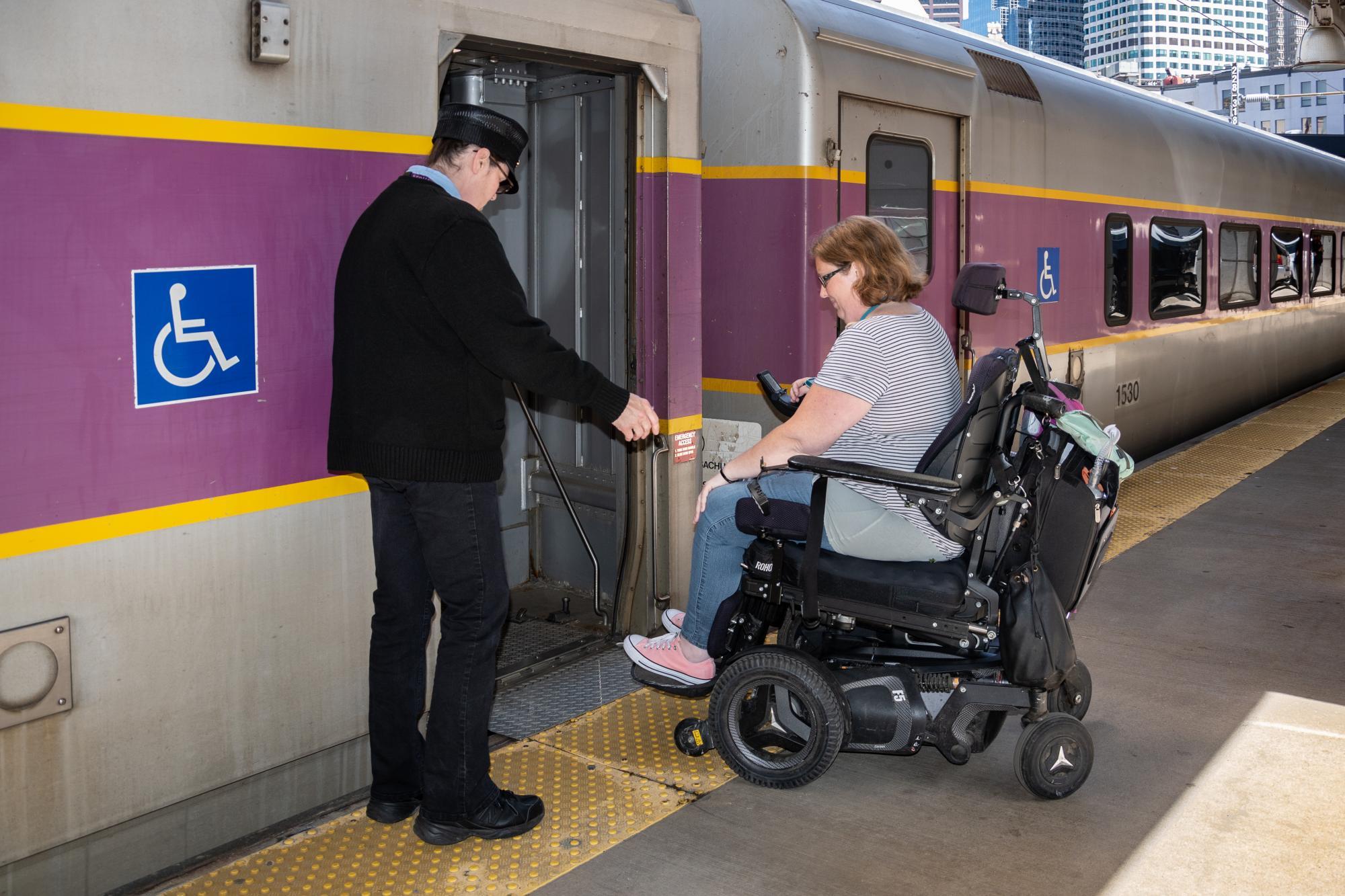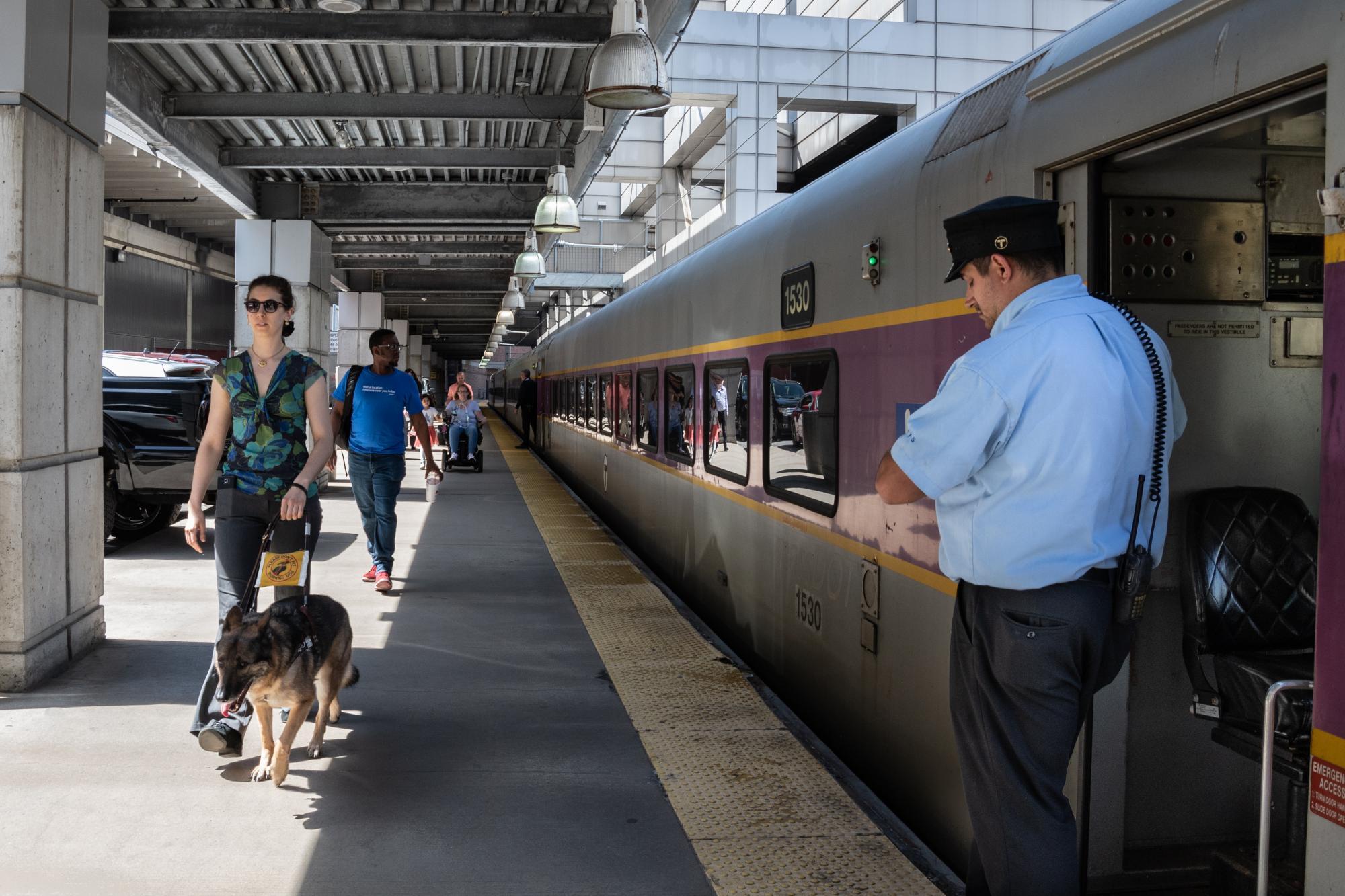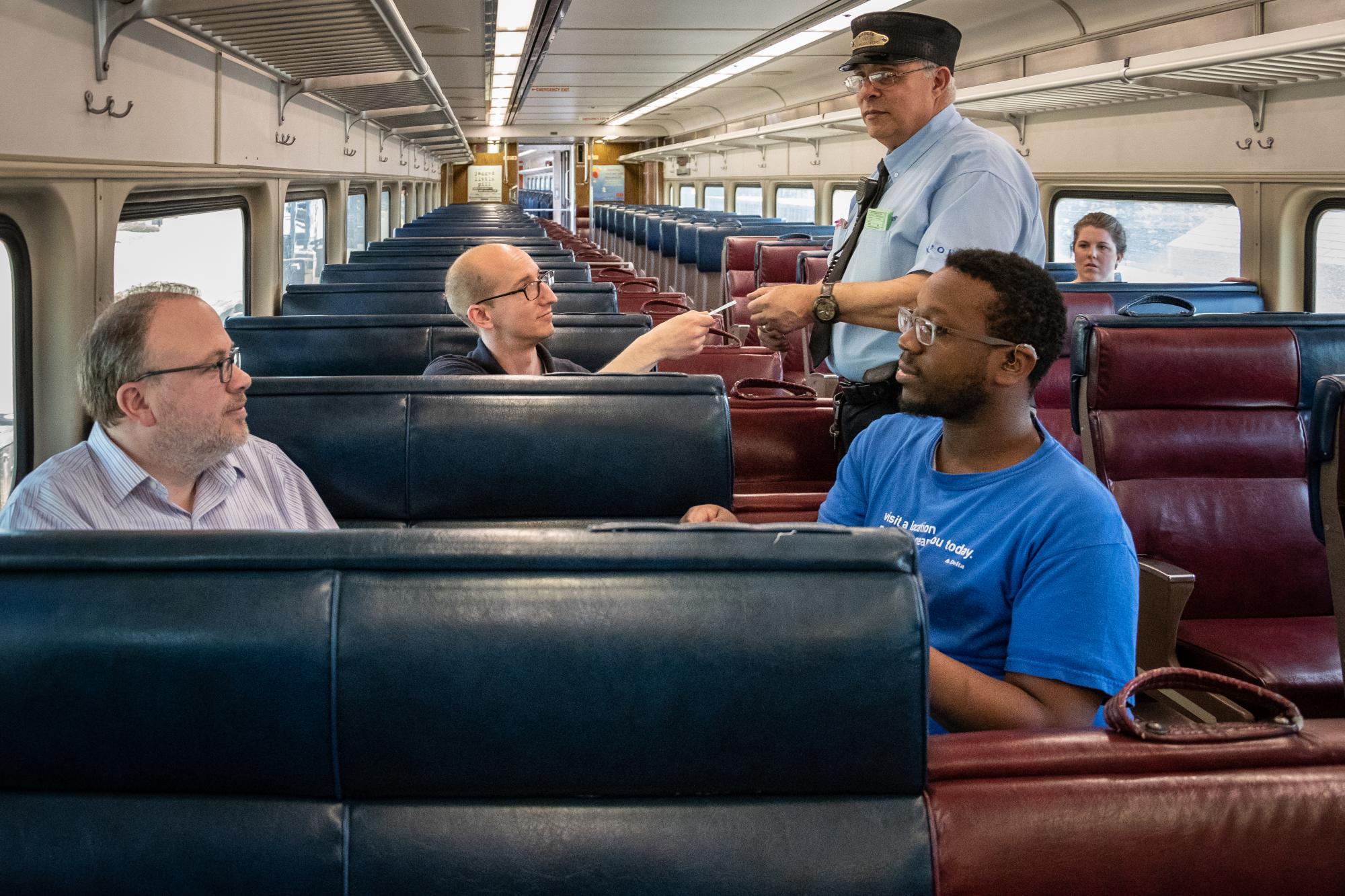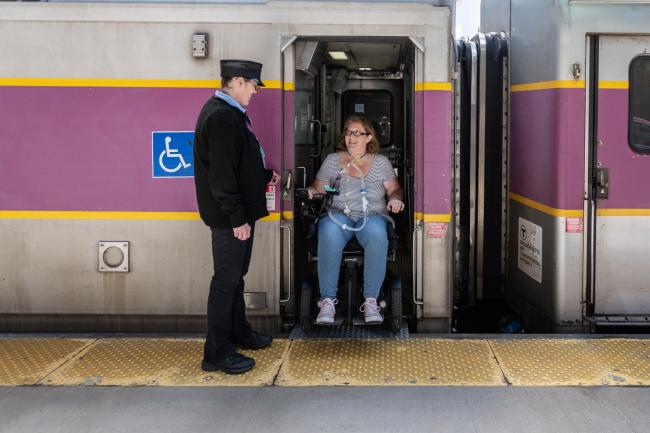Commuter Rail Access Guide
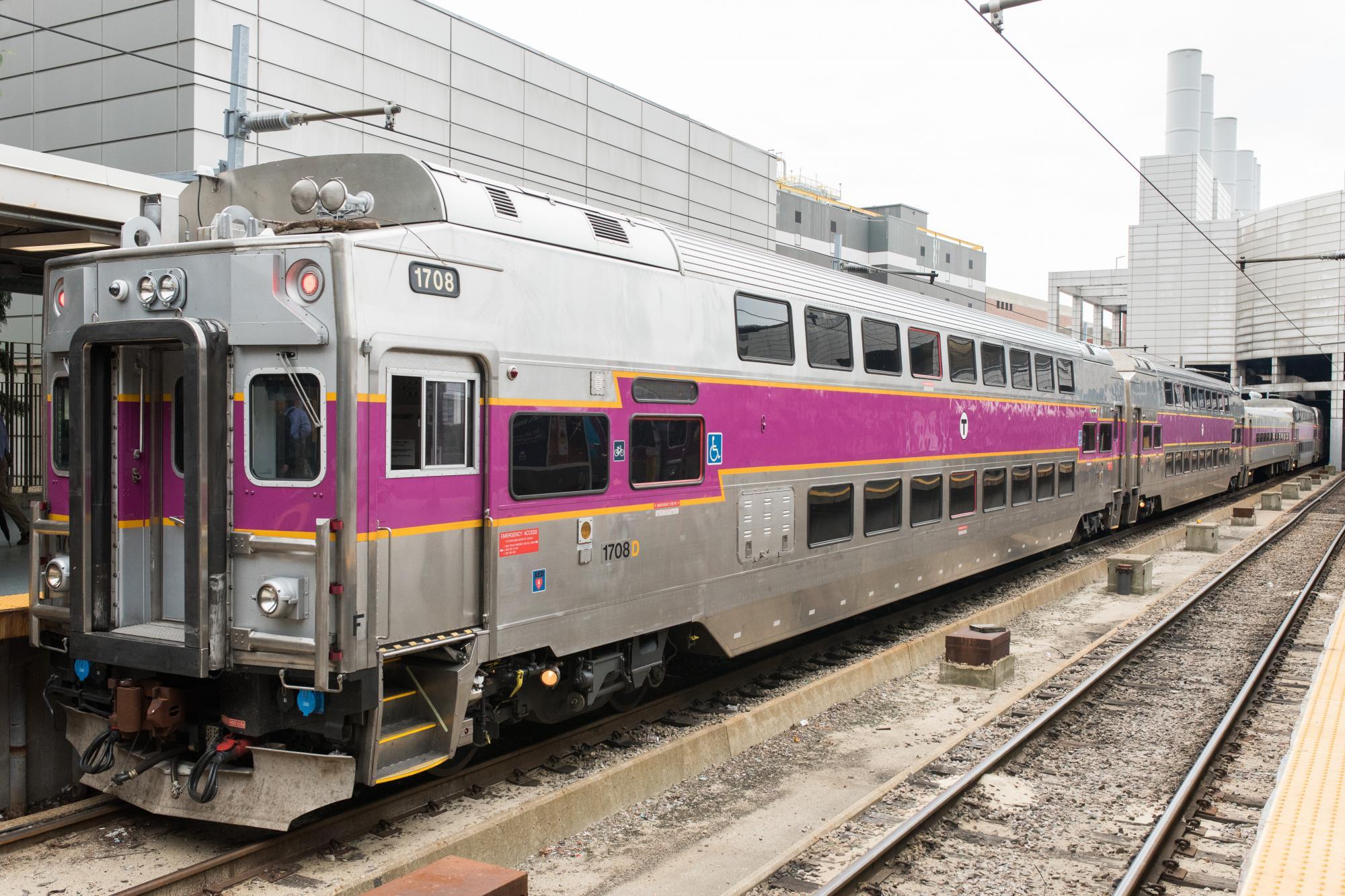
The MBTA Commuter Rail serves Greater Boston, Central Massachusetts, and Rhode Island and offers a variety of accessible features to help you travel throughout the area.
Key train and station features include:
- Elevators, ramps, and escalators for station access
- High-level or mini-high platforms for level boarding
- Tactile warning strips
- Mobile bridge plates to span the gap between the train and the platform
- Seating areas for customers who use wheeled mobility devices
- Audio and digital announcements of train arrivals, departures, and track info at stations
- Onboard audio stop announcements
Planning Your Trip
Most Commuter Rail stations are accessible. To ensure an accessible trip on the MBTA, you can use any of the following tools:
- Check for accessibility features at Commuter Rail stops and stations along your route
- Plan an accessible journey on the T with the MBTA trip planner
- Contact Customer Support to request Commuter Rail schedules in large print or braille formats
- Try some of our additional accessible trip planning tools
Fares and Passes
People 65 and older and people with disabilities may qualify for reduced Commuter Rail fares.
Apply through the Charlie Service Center to receive a:
If you are older than 65, you can also show a ticket agent or conductor a valid, government-issued ID to pay a reduced fare price on the Commuter Rail.
Learn more about reduced fare programs
You can also show a ticket agent or conductor a TAP card from a Massachusetts or Rhode Island Regional Transit Authority to pay a reduced Commuter Rail fare.
Learn more about Regional Transit Authorities
What You Can Expect at an MBTA Commuter Rail Station
MBTA Commuter Rail stations are marked with a large “T” logo and purple signs with the station name.
At larger terminals like North Station and South Station, train lines don't always board on the same track. About 10-15 minutes before the train’s scheduled departure, you can find the track number on the departure board. The station agent will also announce the track number over the loudspeaker.
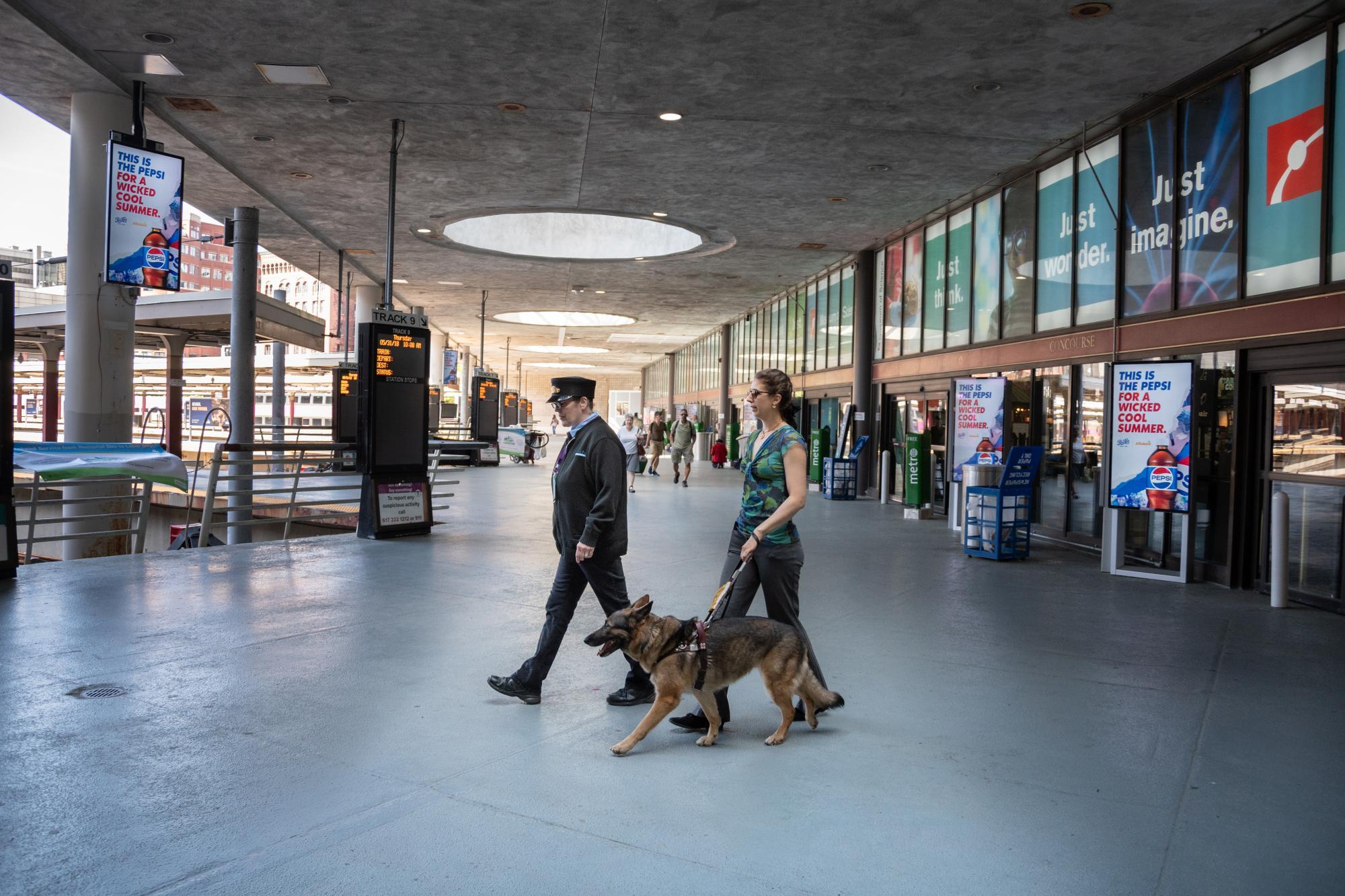
If you need assistance finding the correct platform or train, MBTA staff members are available at North Station, South Station, and Back Bay Station to help you find your platform or buy tickets for your trip.
Boarding Commuter Rail Trains
There are 3 types of platforms at Commuter Rail stations: full high-level, mini high-level, and low-level platforms.
At both full high-level and mini high-level platforms, the conductor can deploy a bridge plate upon request to span the gap between the train and the platform.
Full High-level Platform
Full high-level platforms allow for level boarding at all cars of the train.
Mini High-level Platform
Mini high-level platforms allow for level boarding at 2 cars of the train.
Mini high-level platforms will typically be connected to low-level platforms by a ramp. Position yourself on the mini-high platform before the train arrives and the operator will assist you.
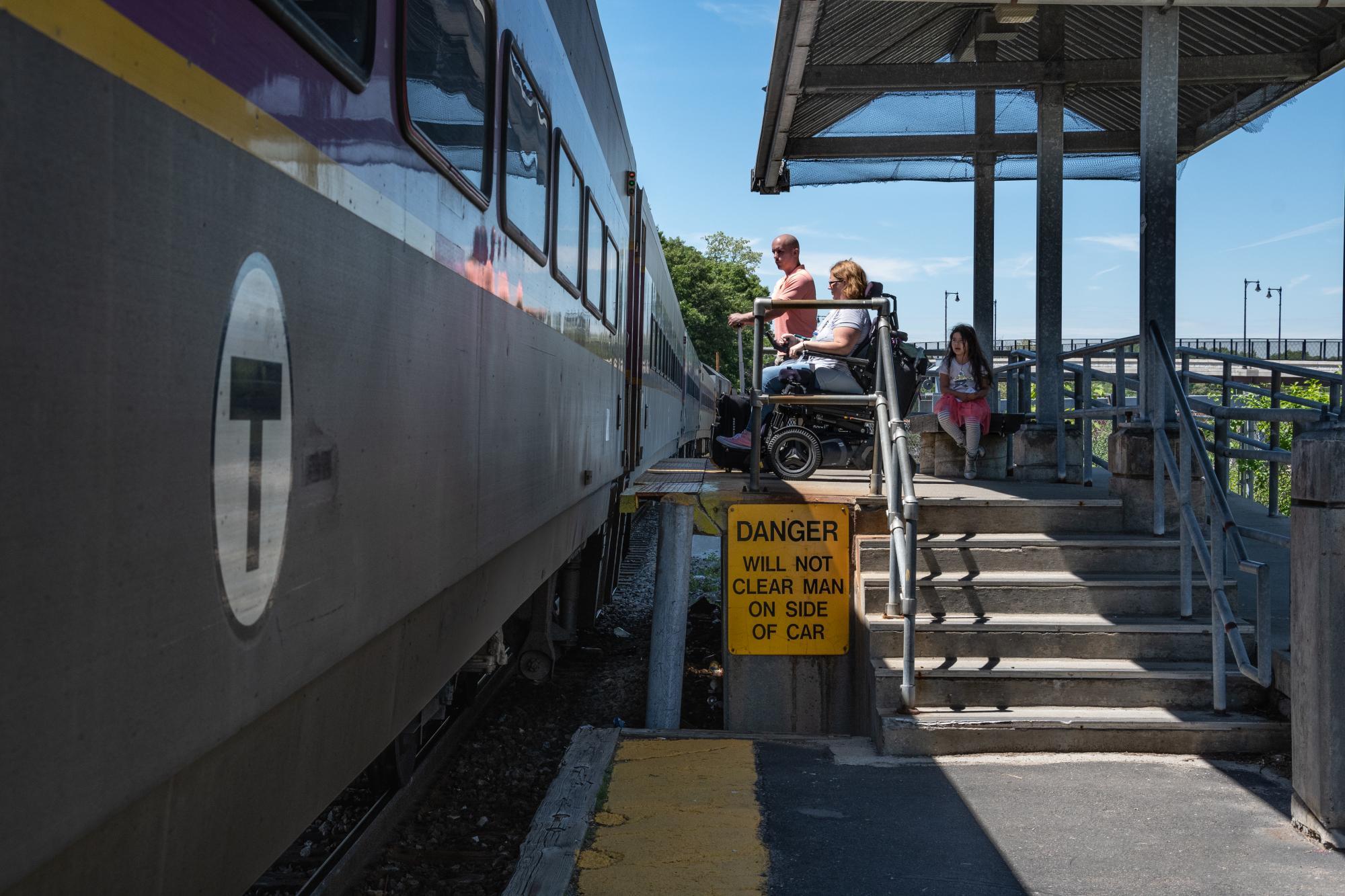
Low-level Platforms
Some stations only have low-level platforms, and customers are required to climb 3-4 steps to board the train.
Always check station accessibility features before you start your trip.
Contact Us
Contact MBTA Customer Support with any questions, concerns, or comments about accessibility. Be prepared to provide as many details as possible so we can provide the most helpful response.
Learn more about the accessibility complaint process
Main Hotline: 617-222-3200
Toll Free: 800-392-6100
711 for TTY callers; VRS for ASL callers
Elevator/Escalator Hotline: 617-222-2828
Online
T Access Guides by Mode
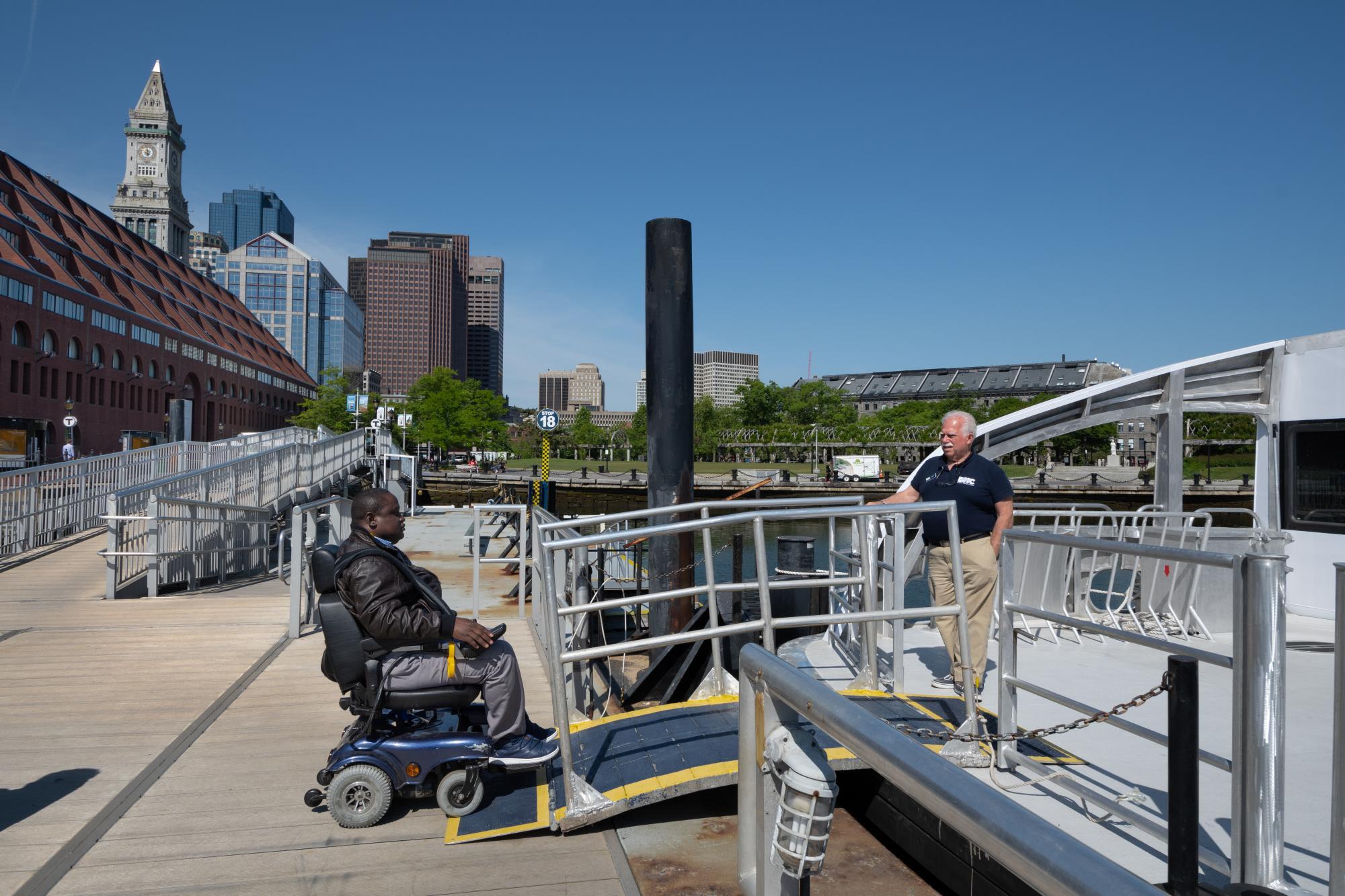
Much of the MBTA is accessible. Learn more about accessibility features on each mode of transit with our access guides.
On Board the Commuter Rail
The conductor may ask for your destination stop to ensure you can safely exit the train at that station. They may also tell you which car you need to be in to exit at an accessible location.
Paying Your Fare
The conductor will verify your ticket or pass as they walk through the train car. If you don't already have a ticket or pass, you can pay your fare with cash or a credit card on board on the train.
Priority Seating
Priority seating is available near every train door. Designated seating areas are available for customers who use wheeled mobility devices. Customers are expected to yield priority seats to older adults and people with disabilities, but cannot be forced to move.
Stop Announcements
Each station along the route will be announced by an automated system or by the conductor. If you aren’t sure where your stop is or which car to exit from, the conductor can help you.
Exiting Commuter Rail Trains
Some Commuter Rail stations are designated as “flag stops,” which means that the train will not automatically stop at them. You will need to tell the conductor you wish to exit there. If there are any flag stops along your route, the conductor will make an announcement prior to the train’s arrival at that station.
If you are exiting at either a full high-level or mini high-level platform, the conductor can deploy a bridge plate upon request to span the gap between the train and the platform.
Stations that have only low-level platforms require customers to descend 3-4 steps to exit the train.
Taking the Commuter Rail for the first time?
Learn more about schedules, maps, and navigating our train stations.
Beginner's Guide to the Commuter Rail
Contact Us
Contact MBTA Customer Support with any questions, concerns, or comments about accessibility. Be prepared to provide as many details as possible so we can provide the most helpful response.
Learn more about the accessibility complaint process
Main Hotline: 617-222-3200
Toll Free: 800-392-6100
711 for TTY callers; VRS for ASL callers
Elevator/Escalator Hotline: 617-222-2828
Online
T Access Guides by Mode

Much of the MBTA is accessible. Learn more about accessibility features on each mode of transit with our access guides.
